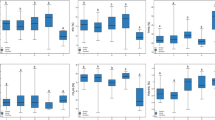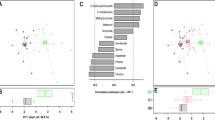Abstract
THE highest incidence of hypomagnesæmia in dairy cattle occurs in the first few weeks of the spring grazing which follows the winter stall-feeding period. Some factors which influence its incidence at this time and methods for its control have been studied at this Institute for several years1. Recently, we have investigated the changes in blood composition, rumen fermentation and mineral metabolism caused by the transfer to grazing or the feeding of cut spring grass in the stall, and several observations have arisen which suggest a possible mechanism for the production of hypomagnesæmia.
This is a preview of subscription content, access via your institution
Access options
Subscribe to this journal
Receive 51 print issues and online access
$199.00 per year
only $3.90 per issue
Buy this article
- Purchase on Springer Link
- Instant access to full article PDF
Prices may be subject to local taxes which are calculated during checkout
Similar content being viewed by others
References
Bartlett, S., Brown, B. B., Foot, A. S., Rowland, S. J., Allcroft, R., and Parr, W. H., Brit. Vet. J., 110 (1), 3 (1954).
McCance, R. A., and Widdowson, E. M., J. Physiol., 101, 350 (1942).
Garner, R. J., Nature, 164, 458 (1949).
Author information
Authors and Affiliations
Rights and permissions
About this article
Cite this article
HEAD, M., ROOK, J. Hypomagnesæmia in Dairy Cattle and its Possible Relationship to Ruminal Ammonia Production. Nature 176, 262–263 (1955). https://doi.org/10.1038/176262a0
Issue Date:
DOI: https://doi.org/10.1038/176262a0
This article is cited by
-
Magnesium metabolism
Ergebnisse der Physiologie Biologischen Chemie und Experimentellen Pharmakologie (1967)
-
Influence of Sodium on the Transport of Magnesium across the Intestinal Wall of the Rat in vitro
Nature (1961)
-
Magnesium Absorption in Sheep
Nature (1961)
-
Dietary Citrate and Hypomagnesæmia in the Ruminant
Nature (1961)
Comments
By submitting a comment you agree to abide by our Terms and Community Guidelines. If you find something abusive or that does not comply with our terms or guidelines please flag it as inappropriate.



